Related Research Articles
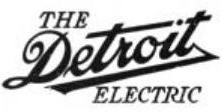
The Detroit Electric was an electric car produced by the Anderson Electric Car Company in Detroit, Michigan. The company built 13,000 electric cars from 1907 to 1939.

Regenerative braking is an energy recovery mechanism that slows down a moving vehicle or object by converting its kinetic energy or potential energy into a form that can be either used immediately or stored until needed.

Ransom Eli Olds was a pioneer of the American automotive industry, after whom the Oldsmobile and REO brands were named. He claimed to have built his first steam car as early as 1887 and his first gasoline-powered car in 1896. The modern assembly line and its basic concept is credited to Olds, who used it to build the first mass-produced automobile, the Oldsmobile Curved Dash, beginning in 1901.

A gyrocar is a two-wheeled automobile. The difference between a bicycle or motorcycle and a gyrocar is that in a bike, dynamic balance is provided by the rider, and in some cases by the geometry and mass distribution of the bike itself, and the gyroscopic effects from the wheels. Steering a motorcycle is done by precessing the front wheel. In a gyrocar, balance was provided by one or more gyroscopes, and in one example, connected to two pendulums by a rack and pinion.

The AMC Amitron was an experimental electric subcompact car built in 1967 by American Motors Corporation (AMC) and Gulton Industries. It included many advanced features, including regenerative braking and advanced battery designs, to provide a 150-mile (240 km) range on a single charge. Development ended because of technology issues and the high cost of batteries.
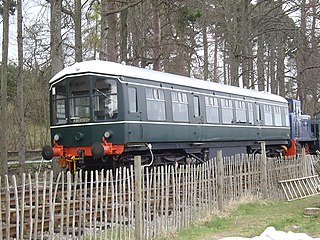
The British Rail BEMU was an experimental two-car battery electric multiple unit (BEMU), converted from the prototype Derby Lightweight Diesel multiple units. The train was powered by many lead-acid batteries, and was used on the Deeside Railway from Aberdeen to Ballater in Scotland from April 1958 until it was finally withdrawn in December 1966. The North of Scotland Hydro-Electric Board initiated the design and was a joint sponsor. The board promised to supply power at three farthings per unit for a fixed two-year period. It provided an 11kV supply to a charger at Aberdeen's platform 1 and a 6.6kV supply to a charger at Ballater.

Baker Motor Vehicle Company was an American manufacturer of Brass Era electric automobiles in Cleveland, Ohio, from 1899 to 1914. It was founded by Walter C. Baker.

The Henney Kilowatt was an electric car introduced in the United States of America for the 1959 model year. The car used some body parts as made for the Renault Dauphine. An improved model was introduced in 1960 with a top speed of 60 miles an hour and a range of 60 miles. Only 47 cars were sold over the two model years, mostly to electrical utility companies. Only a few still exist.
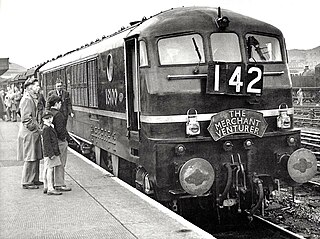
British Rail 18100 was a prototype main line gas turbine-electric locomotive built for British Railways in 1951 by Metropolitan-Vickers, Manchester. It had, however, been ordered by the Great Western Railway in the 1940s, but construction was delayed due to World War II. It spent its working life on the Western Region of British Railways, operating express passenger services from Paddington station, London.
Victor Wouk was an American scientist. He was the pioneer in the development of electric and hybrid vehicles.

The Chevrolet Volt is a plug-in hybrid car that was manufactured by General Motors, and also marketed in rebadged variants as the Holden Volt in Australia and New Zealand and the Buick Velite 5 in China, and with a different fascia as the Vauxhall Ampera in the United Kingdom and as the Opel Ampera in the remainder of Europe. Volt production ended in February 2019.

Lohner–Porsche is a term encompassing several electric vehicles designed by Ferdinand Porsche and manufactured at Lohner-Werke in the early 1900s. They include the first hybrid electric vehicle and the first commercial hub motor car. The hybrid "Mixed" or "Mixte" racecars are powered by a gasoline engine which drives four electric motors, one in each wheel hub. The battery-powered "Touring" or "Chaise" commercial cars utilize only two front-wheel hub motors.

The Jaguar C-X75 is a hybrid-electric, 2-seat, concept car produced by British automobile manufacturer Jaguar Cars in partnership with the derivative of the Formula One team, Williams Advanced Engineering, which debuted at the 2010 Paris Motor Show. The powertrain of the C-X75 concept is rated at 778 hp through four YASA electric motors, each of which drives one of the four wheels. The batteries driving these motors are recharged using two diesel-fed micro gas turbines instead of a conventional four-stroke engine. It was described as a design study that would influence future design and technology.

The Ford Focus Electric is a 5-door hatchback electric car that was produced by Ford. The Focus Electric is Ford's second production all-electric vehicle, and was made from December 2011 to May 2018.

The Citroën ë-Berlingo is a battery-electric version of the Berlingo range of car-based light commercial vehicle (LCV) and multi purpose vehicles (MPV) manufactured and sold by Citroën. Rebadged versions are sold by other marques within Stellantis as the Peugeot e-Partner, Opel/Vauxhall Combo-e, and Fiat E-Doblò; in addition, Toyota sells a rebadged version as the Toyota ProAce City Electric.
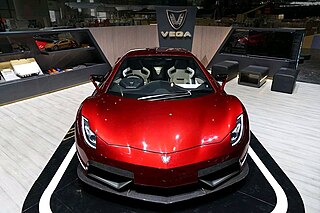
The Vega EVX is an all-electric battery-powered two-seater AWD sports car developed by Sri Lankan automobile manufacturer Vega Innovations and is planned to enter production in 2022. This car is the first sports car to be manufactured in Sri Lanka and the first all electric sportscar to be manufactured in South Asia.

The GM BEV2 platform is an automotive platform made by General Motors designed specifically for small electric vehicles. Multiple divisions of the LG Corporation have been instrumental in construction in addition to GM's contributions to the platform.
Bollinger Motors is an American automobile manufacturer of electric vehicles based in Oak Park, Michigan.
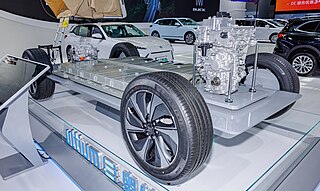
Ultium is an electric vehicle battery and motor architecture developed by General Motors. It is being deployed for battery electric vehicles from General Motors portfolio brands along with vehicles from Honda and Acura.
References
- ↑ Ind. Eng. Chem. 1960, 52, 2, 32A–42A Publication Date:February 1, 1960 doi : 10.1021/ie50602a005 © American Chemical Society
- ↑ "Nu-Klea Starlite Electric... - Classic and Recreation Sportscars". Facebook. March 24, 2022. Retrieved August 8, 2023.
- ↑ Ind. Eng. Chem. 1960, 52, 2, 32A–42A Publication Date:February 1, 1960 doi : 10.1021/ie50602a005 © American Chemical Society
- ↑ "Kish Industries creates a prototype electric car -the Nu-Klea Starlite- in the old Auto Body plant and debuts it in Lansing's Centennial parade". People's History of Old Town Lansing, Michigan. August 8, 2023. Retrieved August 8, 2023.
- ↑ "Nu-Klea Starlite-1959 - Lane Motor Museum". Lane Motor Museum. February 3, 2015.